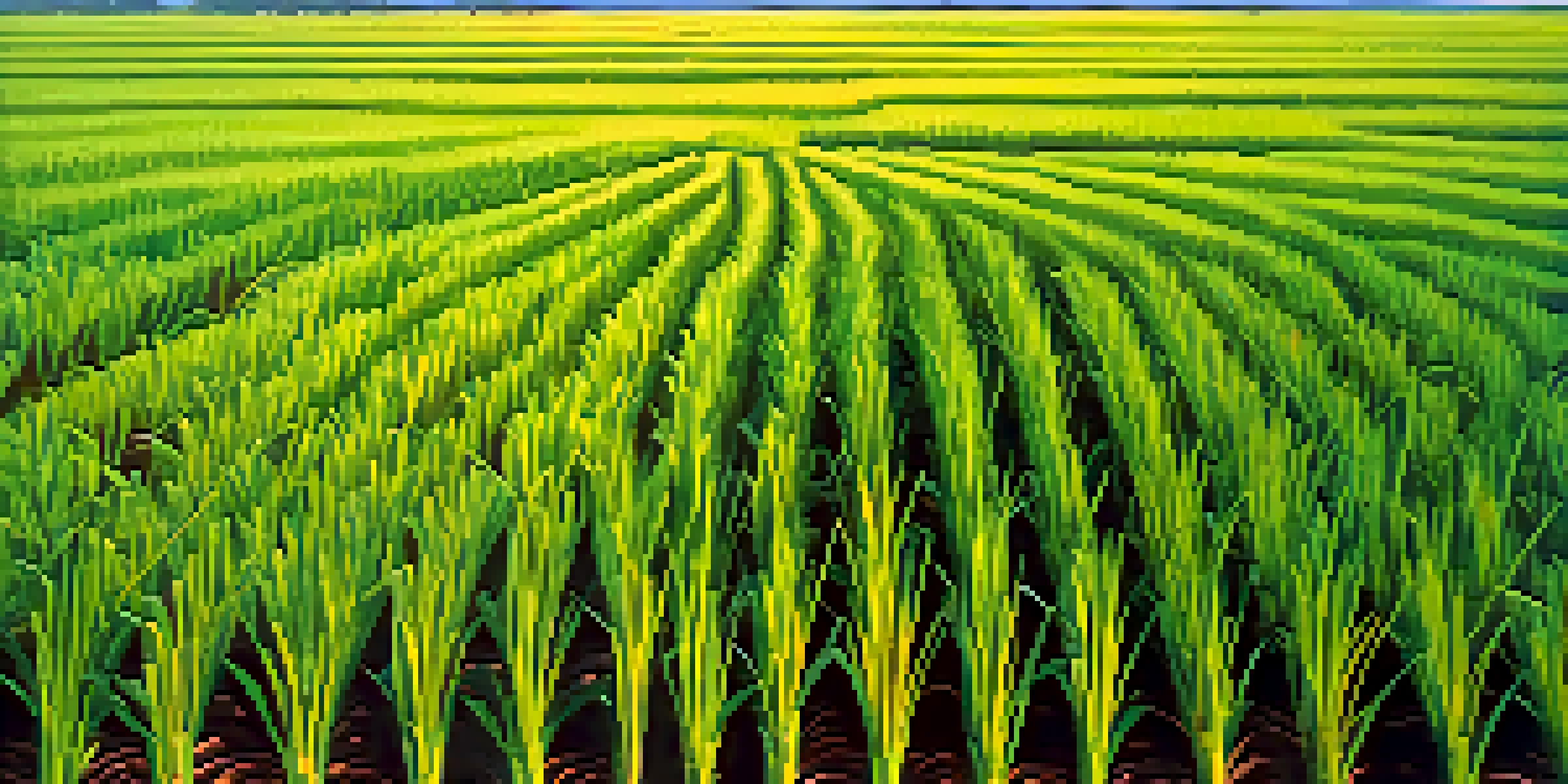Marker-Assisted Selection: A Key Tool in Plant Breeding

Understanding Marker-Assisted Selection in Plant Breeding
Marker-assisted selection (MAS) is a modern technique used in plant breeding that allows breeders to select desirable traits more efficiently. By using specific DNA markers linked to these traits, breeders can identify plants that possess the desired genetic characteristics without waiting for them to mature. This method significantly speeds up the breeding process and enhances the precision of selecting plants with improved qualities.
In the face of global challenges, we must harness the power of biotechnology to enhance food security and sustainability.
For example, if a breeder is looking for drought-resistant traits in crops, they can utilize MAS to find specific markers associated with that resistance. Instead of growing and evaluating thousands of plants over several seasons, they can quickly identify which ones carry the favorable traits. This not only saves time but also resources, making it a win-win for both breeders and farmers.
Moreover, MAS helps in maintaining genetic diversity within breeding programs. By ensuring that the selected plants carry a range of genetic variations, breeders can develop new varieties that are resilient and adaptable to changing environmental conditions.
The Role of Genetic Markers in Plant Improvement
Genetic markers are specific sequences of DNA that can be linked to particular traits. They serve as indicators for the presence of certain genes and can help breeders track these traits through generations. By selecting plants based on these markers, breeders can ensure that the offspring will inherit the desired characteristics, such as disease resistance or higher yield.

Think of genetic markers like a treasure map for breeders. Just as a map guides you to hidden gems, markers lead breeders to plants with valuable traits, allowing them to make more informed decisions. This precision is crucial in a time when food security and climate challenges demand rapid advancements in agriculture.
Efficiency of Marker-Assisted Selection
Marker-assisted selection accelerates the breeding process by allowing breeders to quickly identify plants with desirable traits.
Additionally, advances in technology have made it easier to identify and utilize these markers. With techniques such as genome sequencing becoming more accessible, breeders can employ MAS with greater accuracy and speed, ultimately leading to better crop varieties.
Benefits of Marker-Assisted Selection in Agriculture
One of the most significant advantages of MAS is its ability to accelerate the breeding process. Traditional breeding methods can take years, if not decades, to achieve desired results. In contrast, MAS allows for quicker identification of plants with beneficial traits, enabling faster development of new varieties that can meet market demands.
The future of agriculture lies in the ability to innovate and adapt to the changing environment using science and technology.
Moreover, MAS can lead to improved crop resilience against pests and diseases. By selecting plants that have been identified through markers as resistant, breeders can significantly reduce the reliance on chemical treatments. This not only benefits the environment but also promotes sustainable agriculture practices.
Lastly, MAS contributes to higher yields and better quality crops. With the ability to select for multiple traits simultaneously, breeders can create superior varieties that perform well under various conditions, ensuring food supply stability for a growing global population.
Challenges and Limitations of Marker-Assisted Selection
While MAS holds great promise, it does come with its own set of challenges. One of the main limitations is the cost associated with the technology and resources required for genetic analysis. Smaller breeding programs or farms may struggle to afford these tools, potentially widening the gap between large agribusinesses and smaller operators.
Additionally, the complexity of plant genomes can pose difficulties in accurately identifying the right markers for certain traits. Not all traits are controlled by single genes; many are polygenic, meaning they are influenced by multiple genes, which complicates the selection process.
Genetic Markers Guide Breeding
Genetic markers serve as indicators for specific traits, enabling breeders to make informed selections that enhance crop performance.
Despite these challenges, ongoing research and technological advancements are continually improving the accessibility and efficiency of MAS. As more breeders embrace these methods, it is likely that the challenges will be addressed, paving the way for broader adoption in the agricultural sector.
The Future of Marker-Assisted Selection in Plant Breeding
The future of marker-assisted selection in plant breeding looks promising, especially with the rapid advancements in biotechnology. As researchers develop new genomic tools and techniques, the accuracy and efficiency of MAS will continue to improve. This evolution will enable breeders to tackle more complex traits and challenges in crop production.
Moreover, the integration of MAS with other modern breeding techniques, such as genomic selection and CRISPR technology, is likely to yield even more significant breakthroughs. These combined approaches could lead to the development of crop varieties that are not only high-yielding but also resilient against climate change and other environmental stressors.
Ultimately, the continued investment in research and development will be crucial for the success of MAS. By fostering collaboration between scientists, breeders, and farmers, the agricultural community can work together to create sustainable solutions that ensure food security for future generations.
Case Studies: Successful Applications of MAS
There are numerous success stories that illustrate the effectiveness of marker-assisted selection in real-world scenarios. For instance, researchers have successfully developed rice varieties that are resistant to bacterial blight using MAS. By identifying specific markers linked to resistance, breeders were able to create new strains that perform well under disease pressure, benefiting farmers across affected regions.
Another notable example comes from the development of drought-tolerant maize. Using MAS, breeders identified genetic markers associated with drought resistance, allowing them to produce varieties that can thrive even in arid conditions. This advancement has been especially beneficial in regions facing water scarcity, helping to improve food security.
Sustainability Through Resilient Varieties
By developing crop varieties that are resilient to environmental challenges, marker-assisted selection promotes sustainable agricultural practices.
These case studies highlight not only the potential of MAS in addressing specific agricultural challenges but also its role in promoting sustainable practices. By developing resilient crop varieties, MAS contributes to a more secure and environmentally-friendly agricultural landscape.
Conclusion: Embracing Marker-Assisted Selection for Better Harvests
In conclusion, marker-assisted selection represents a transformative approach in plant breeding, offering efficiency and precision that traditional methods lack. As we face increasing challenges in agriculture, such as climate change and food security, embracing MAS can lead to the development of superior crop varieties that meet these demands.
By understanding and utilizing genetic markers, breeders can make informed decisions that enhance crop resilience and yield. The journey of agricultural innovation is ongoing, and MAS is a key player in shaping the future of food production.

As stakeholders in the agricultural sector continue to collaborate and invest in research, the benefits of marker-assisted selection will undoubtedly be realized on a wider scale, paving the way for a more sustainable and productive agricultural landscape.